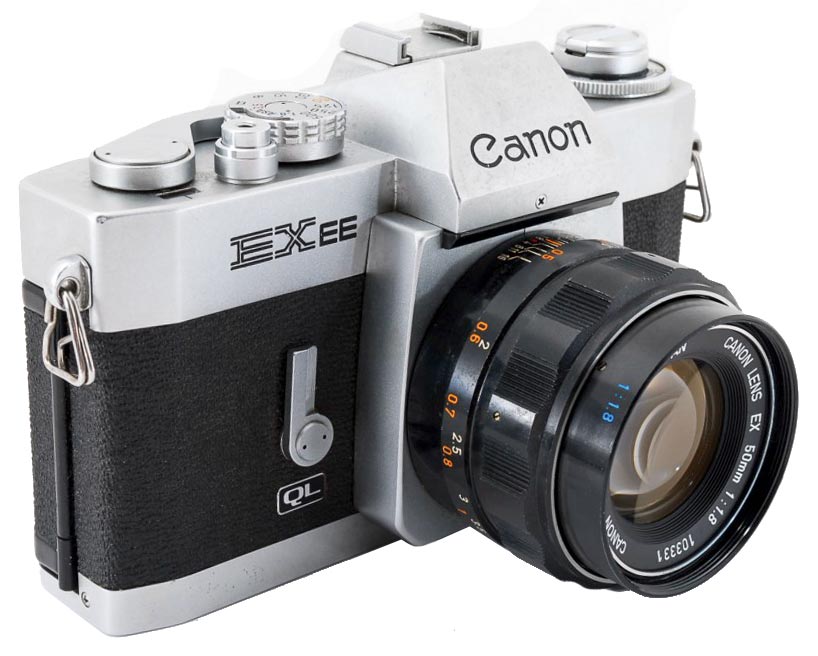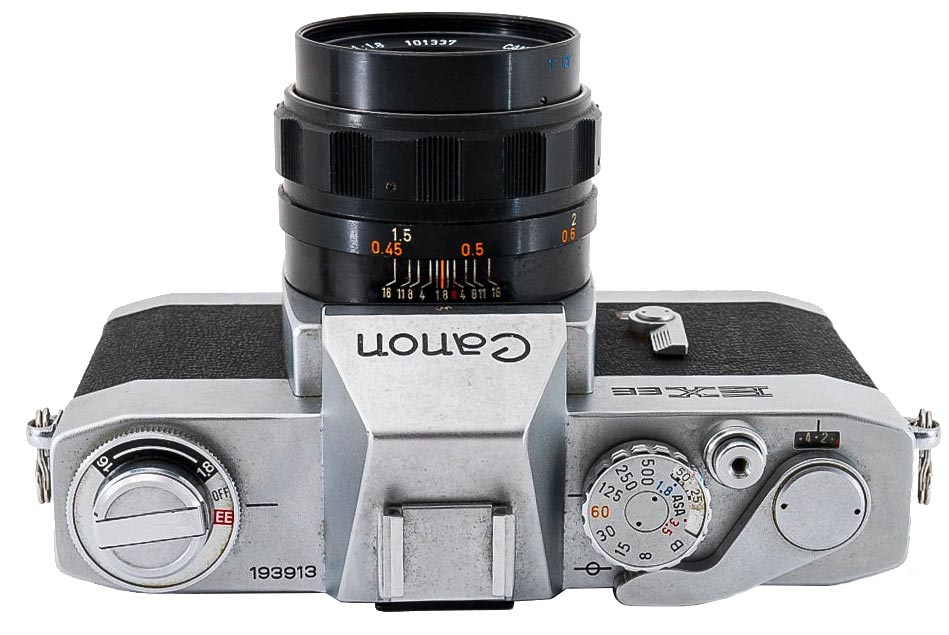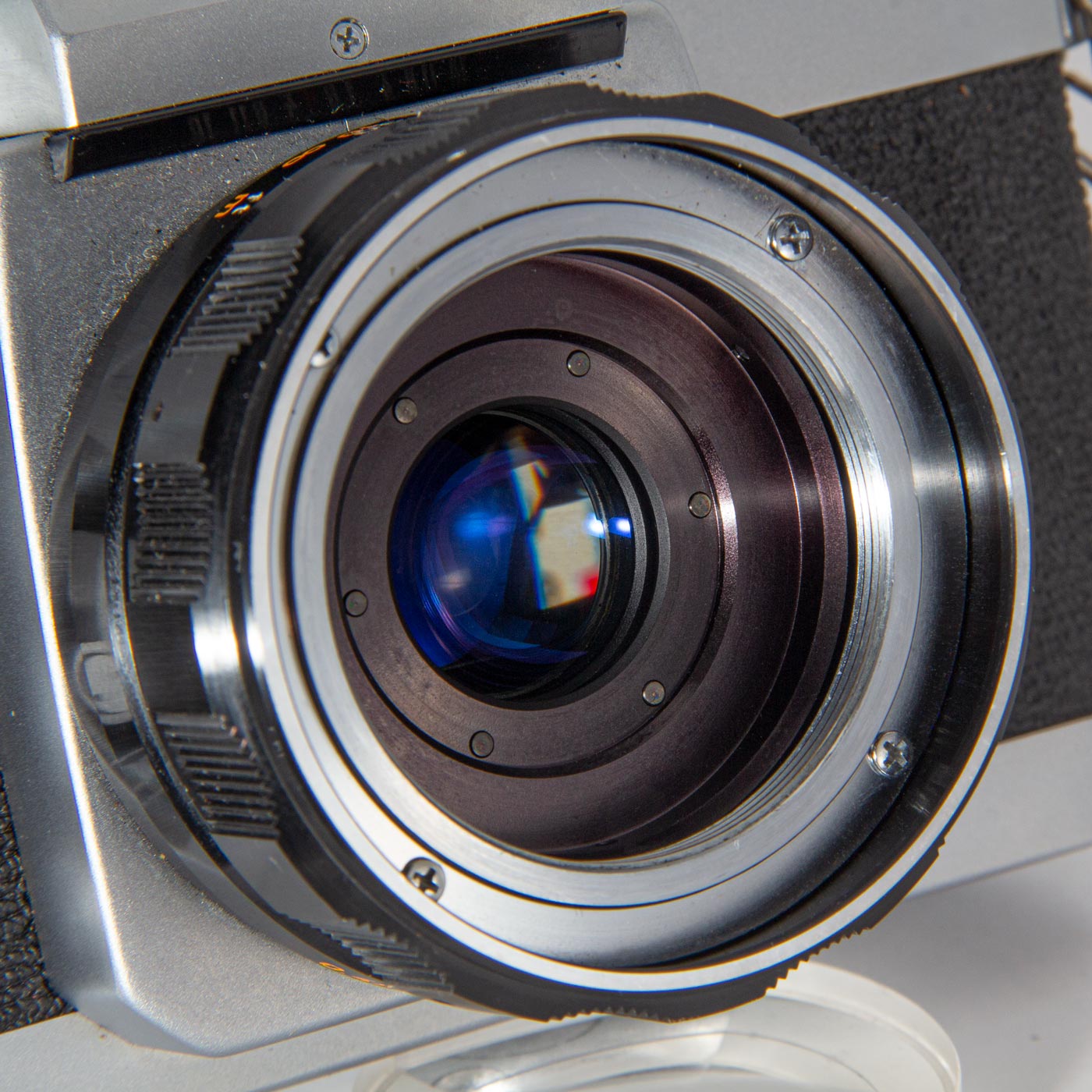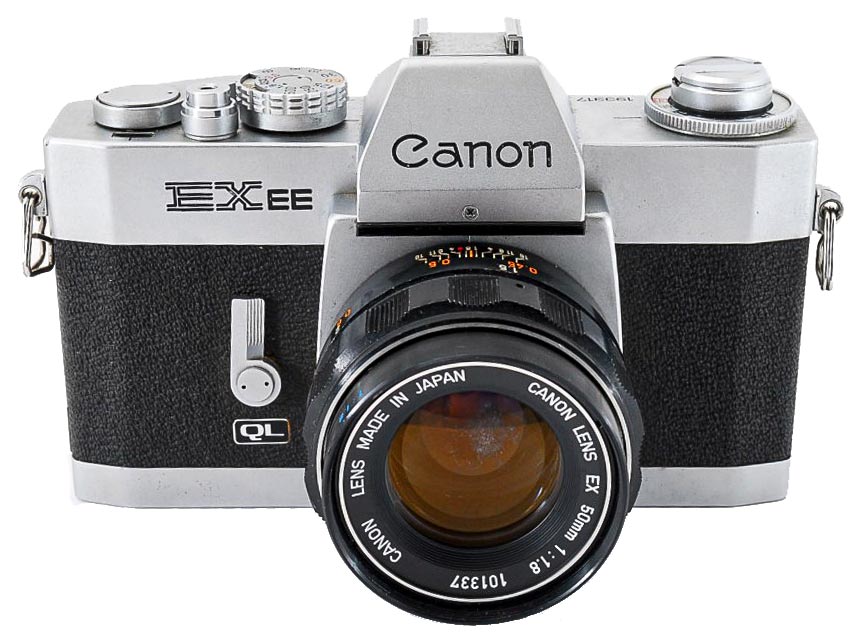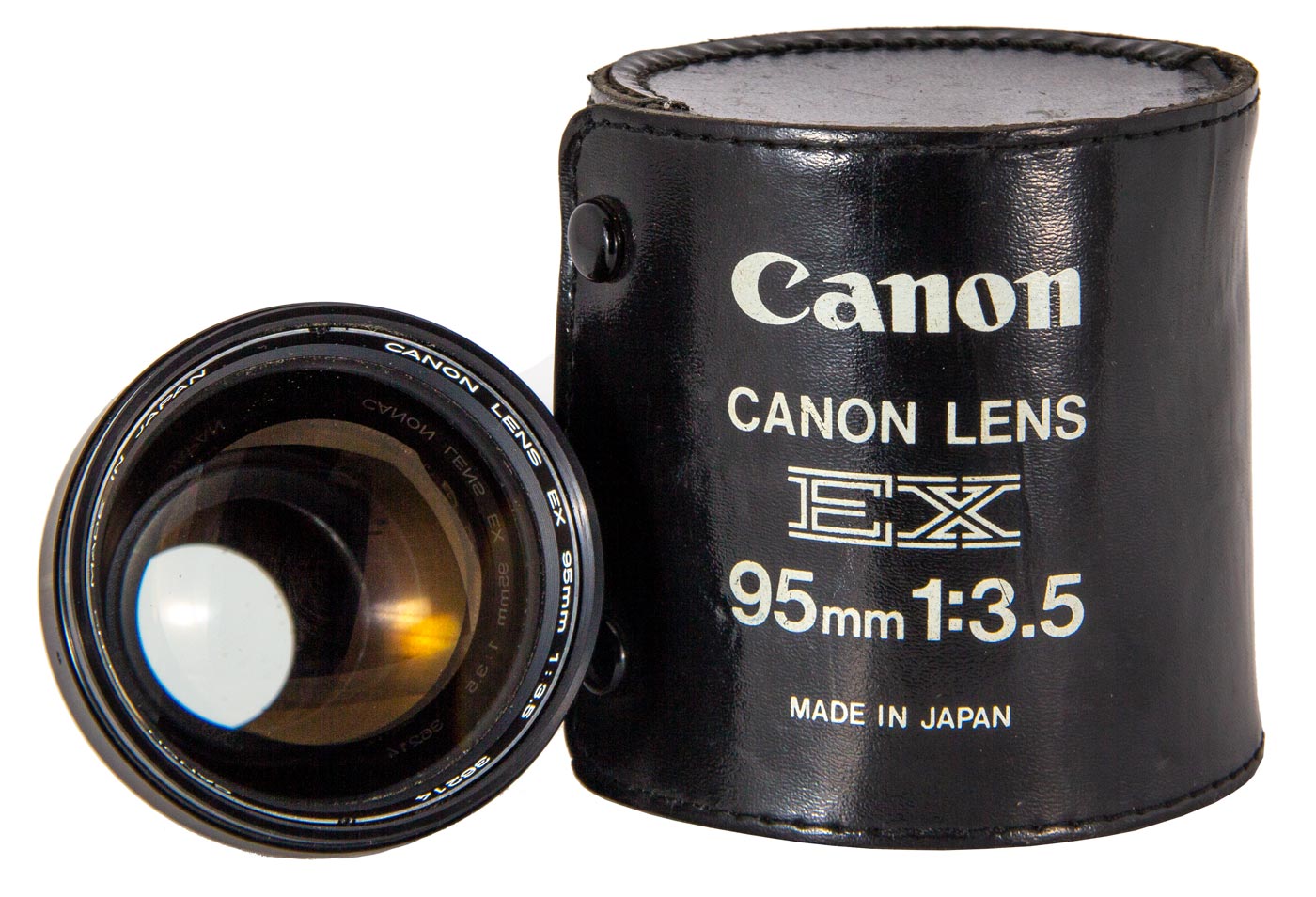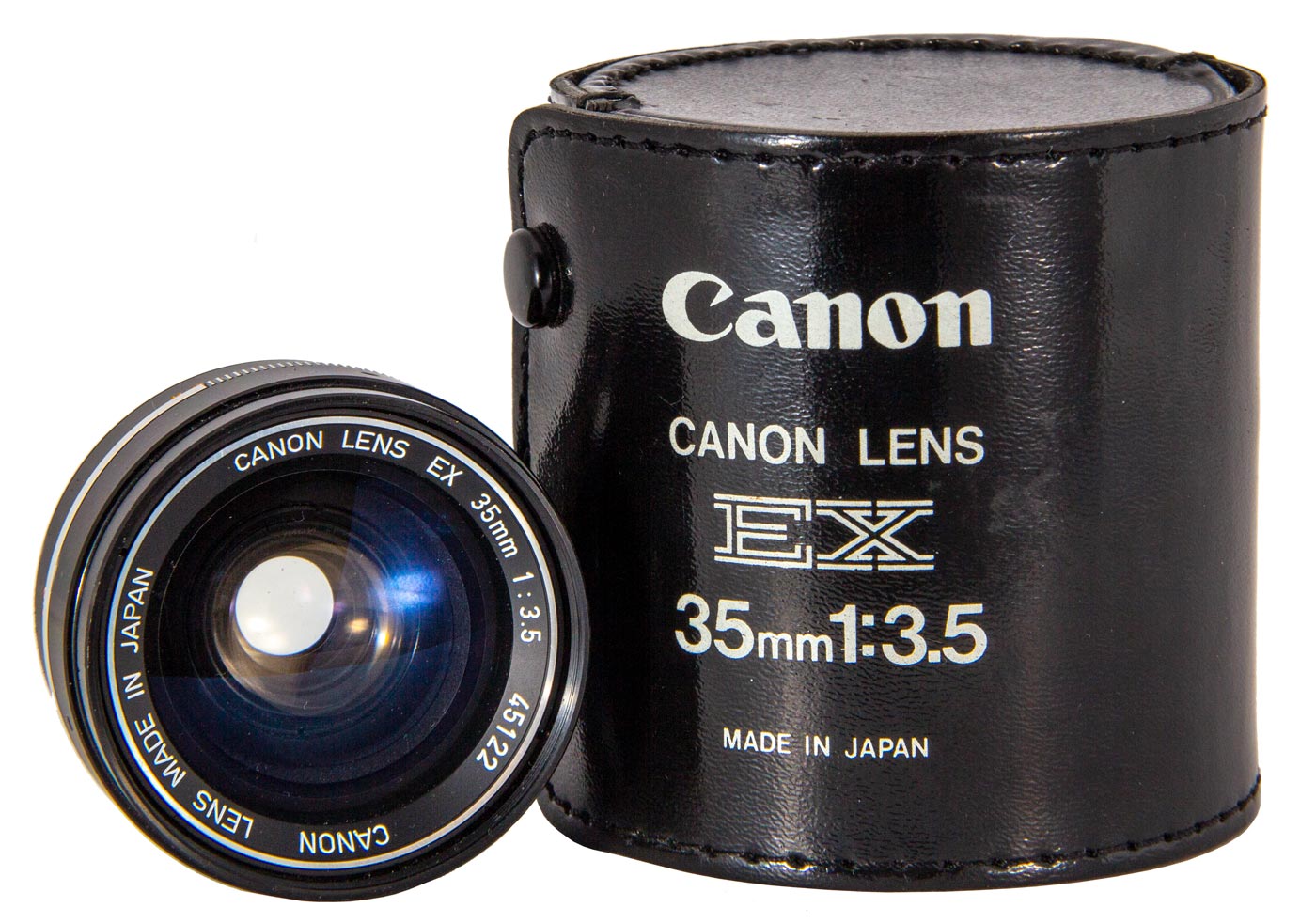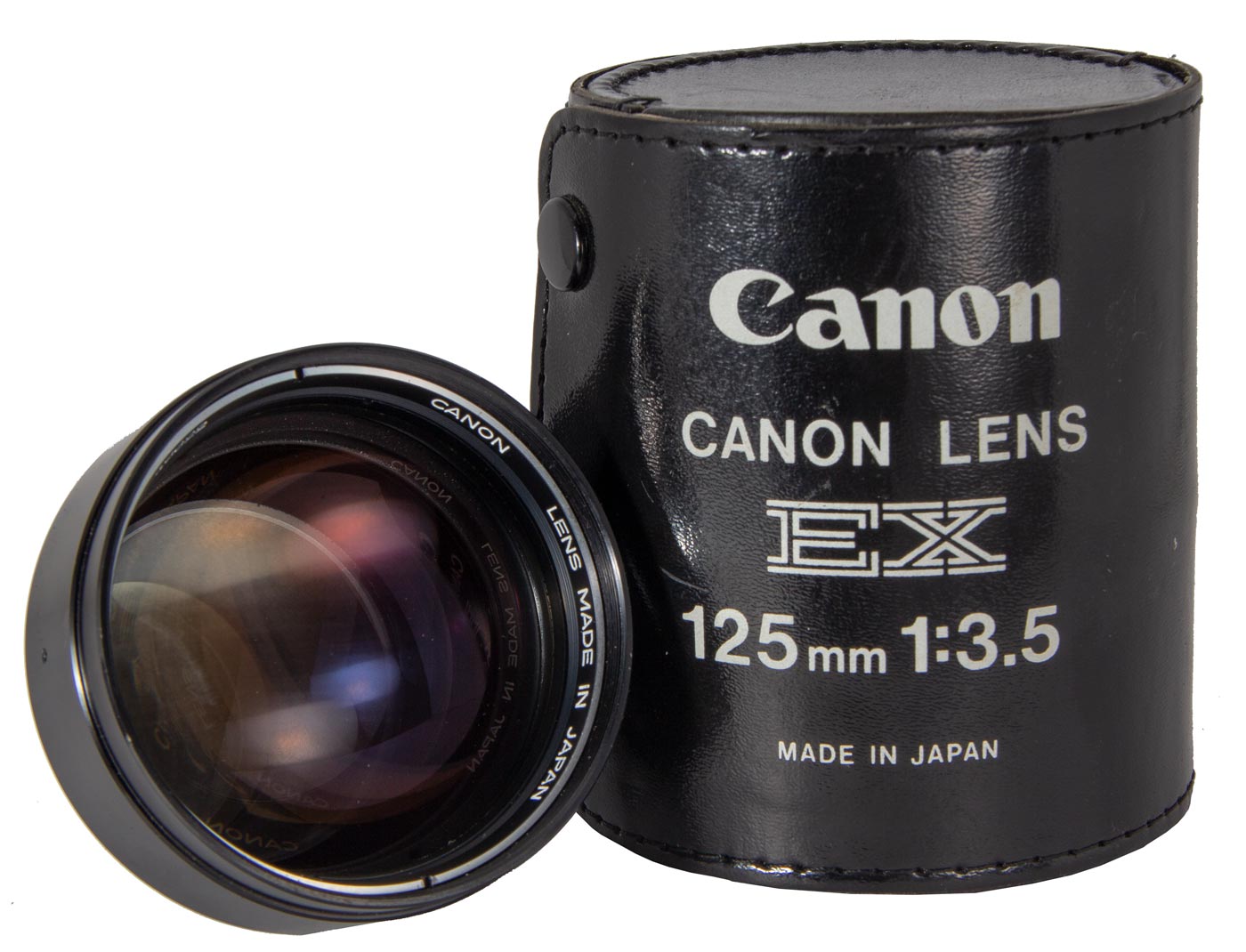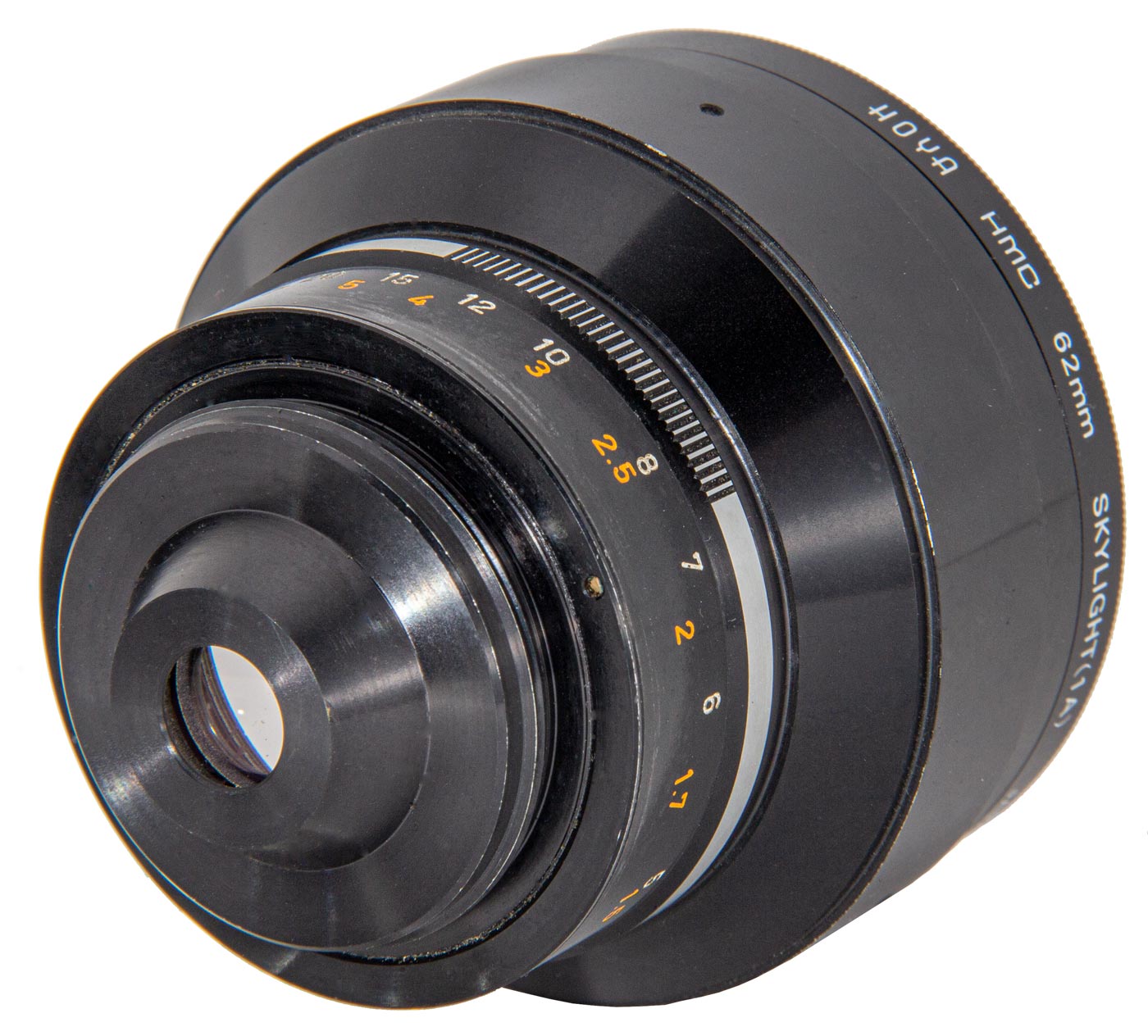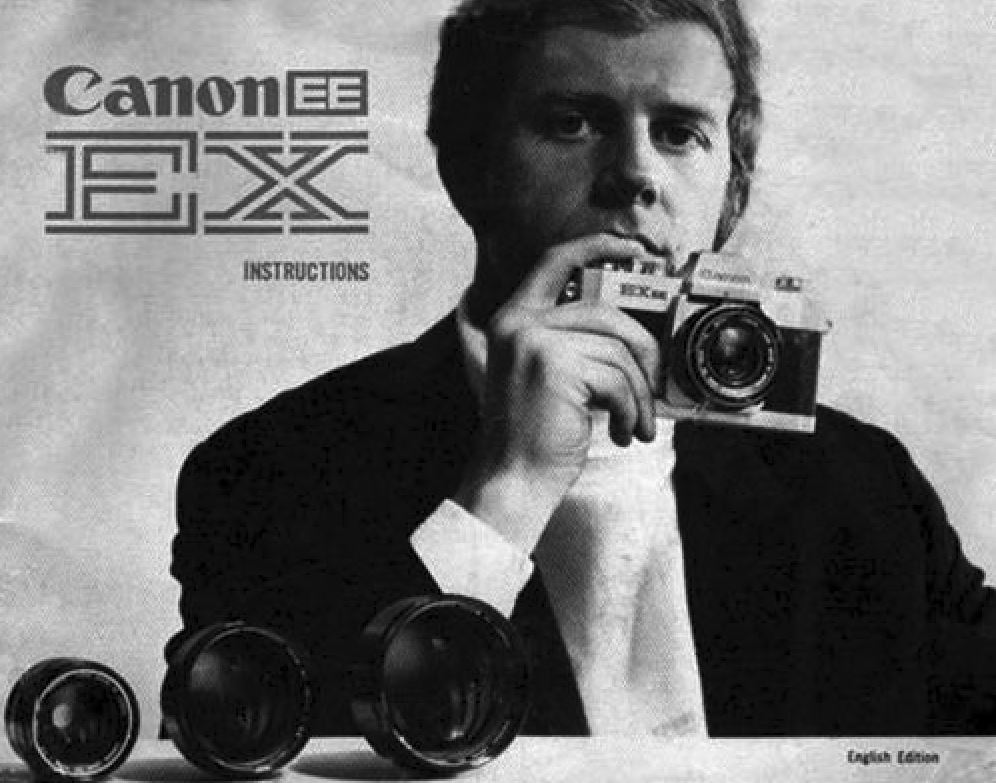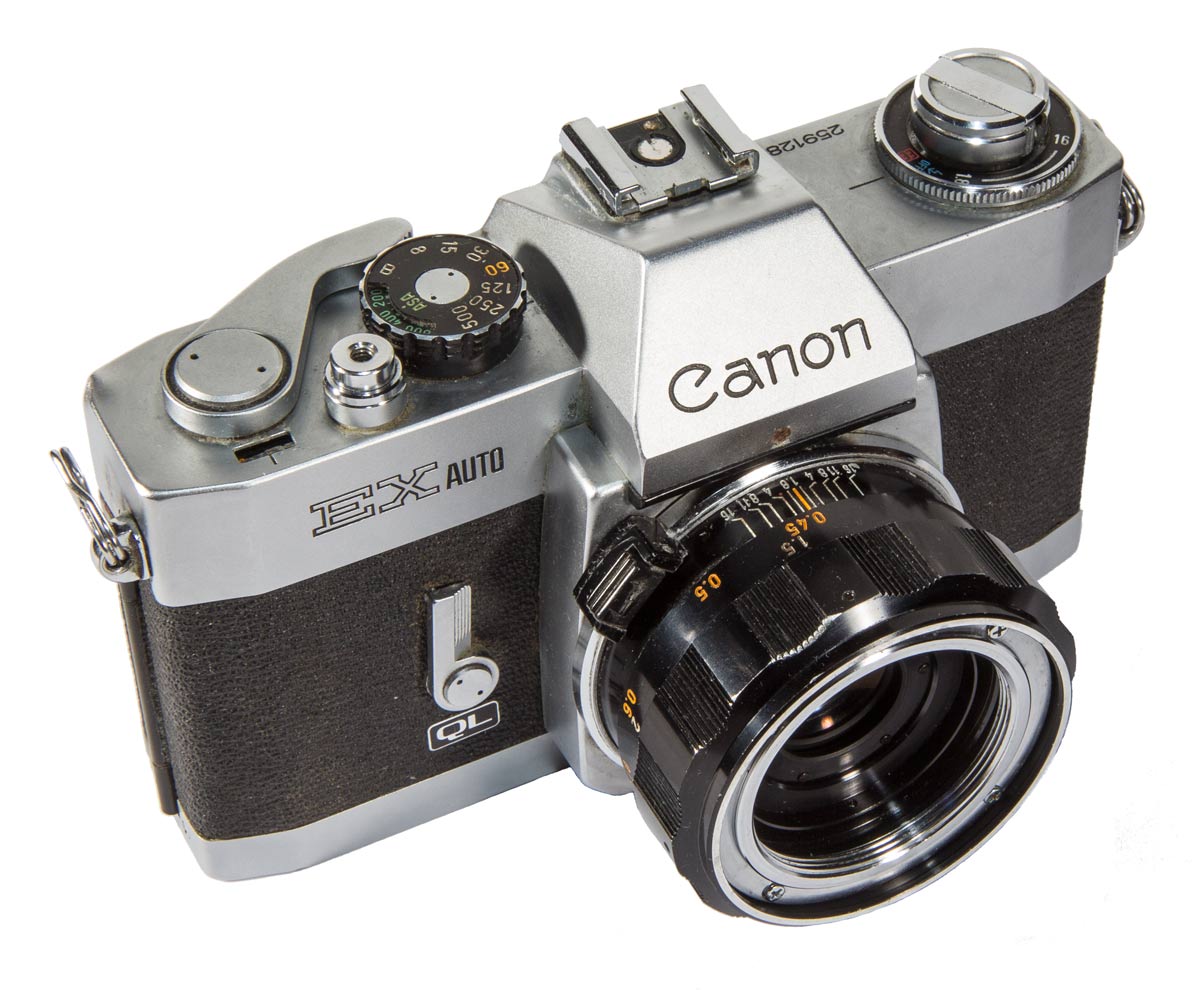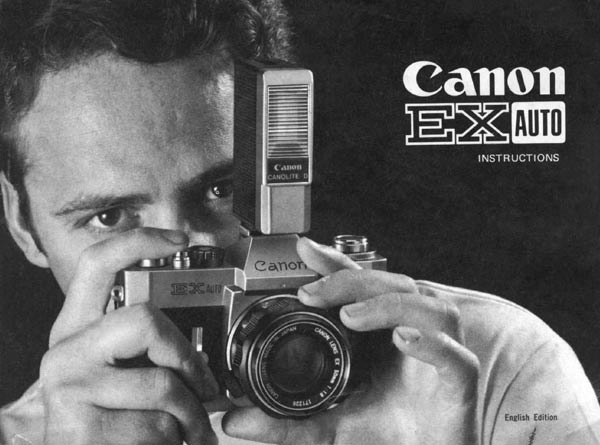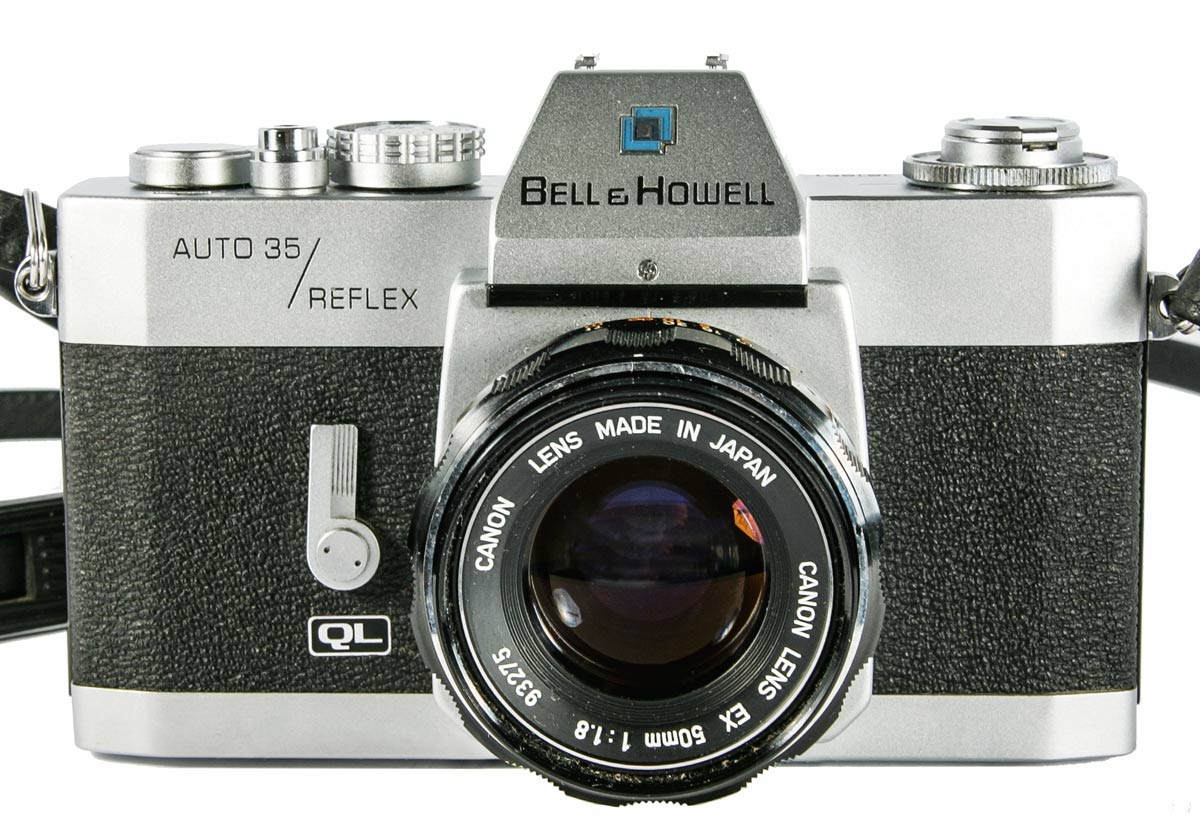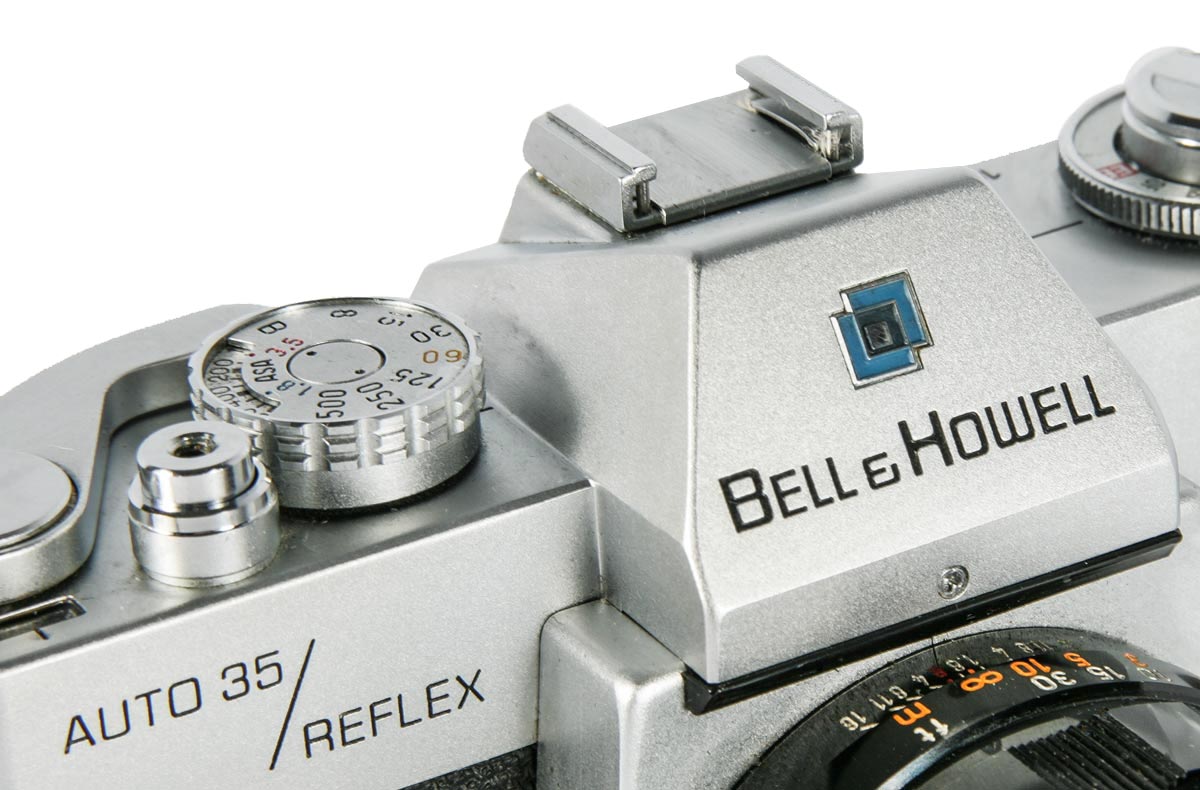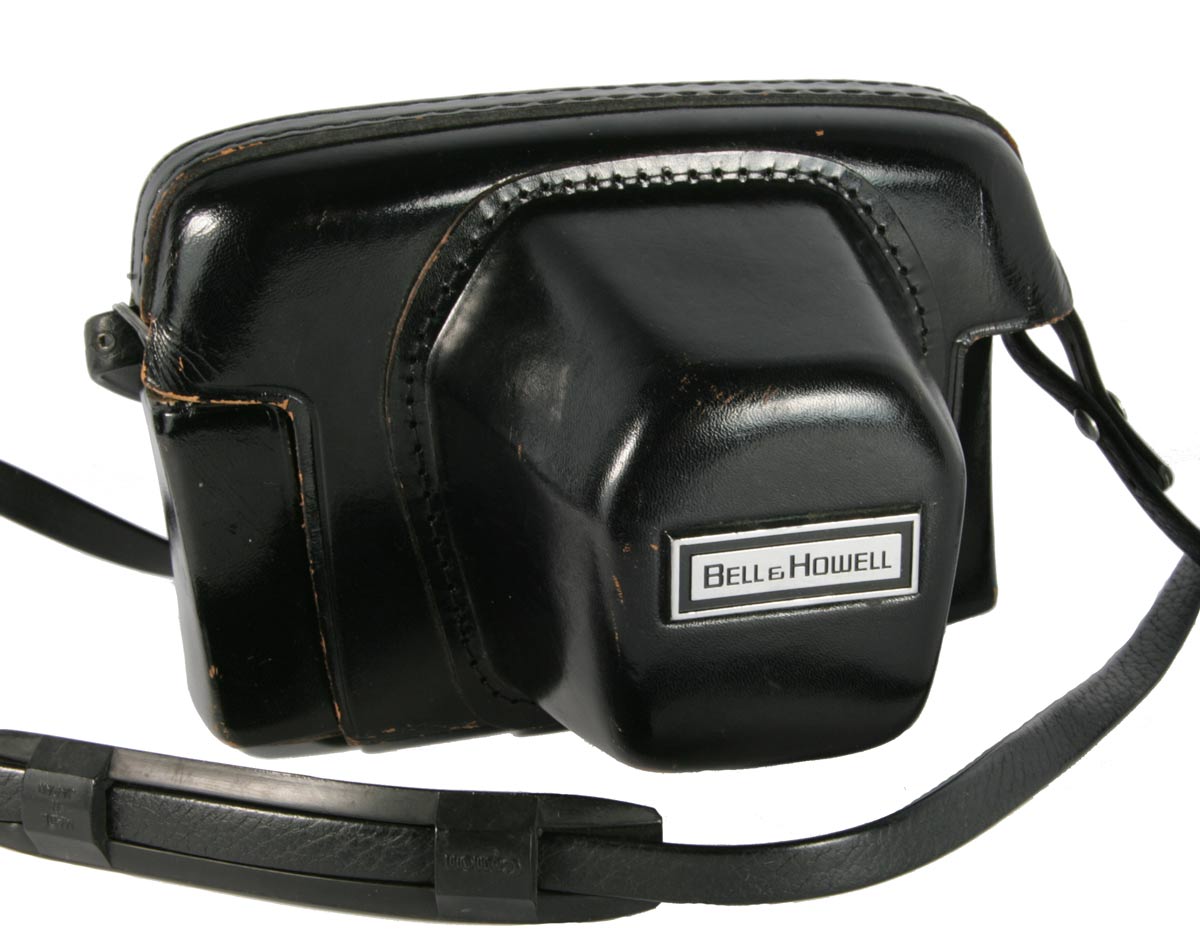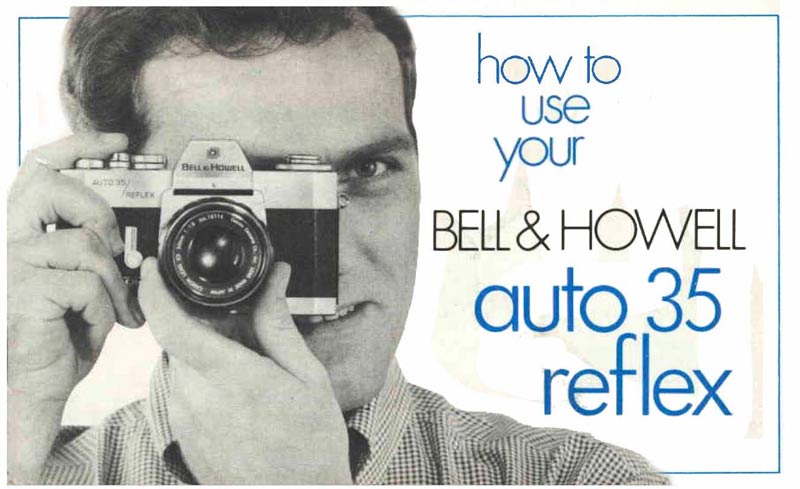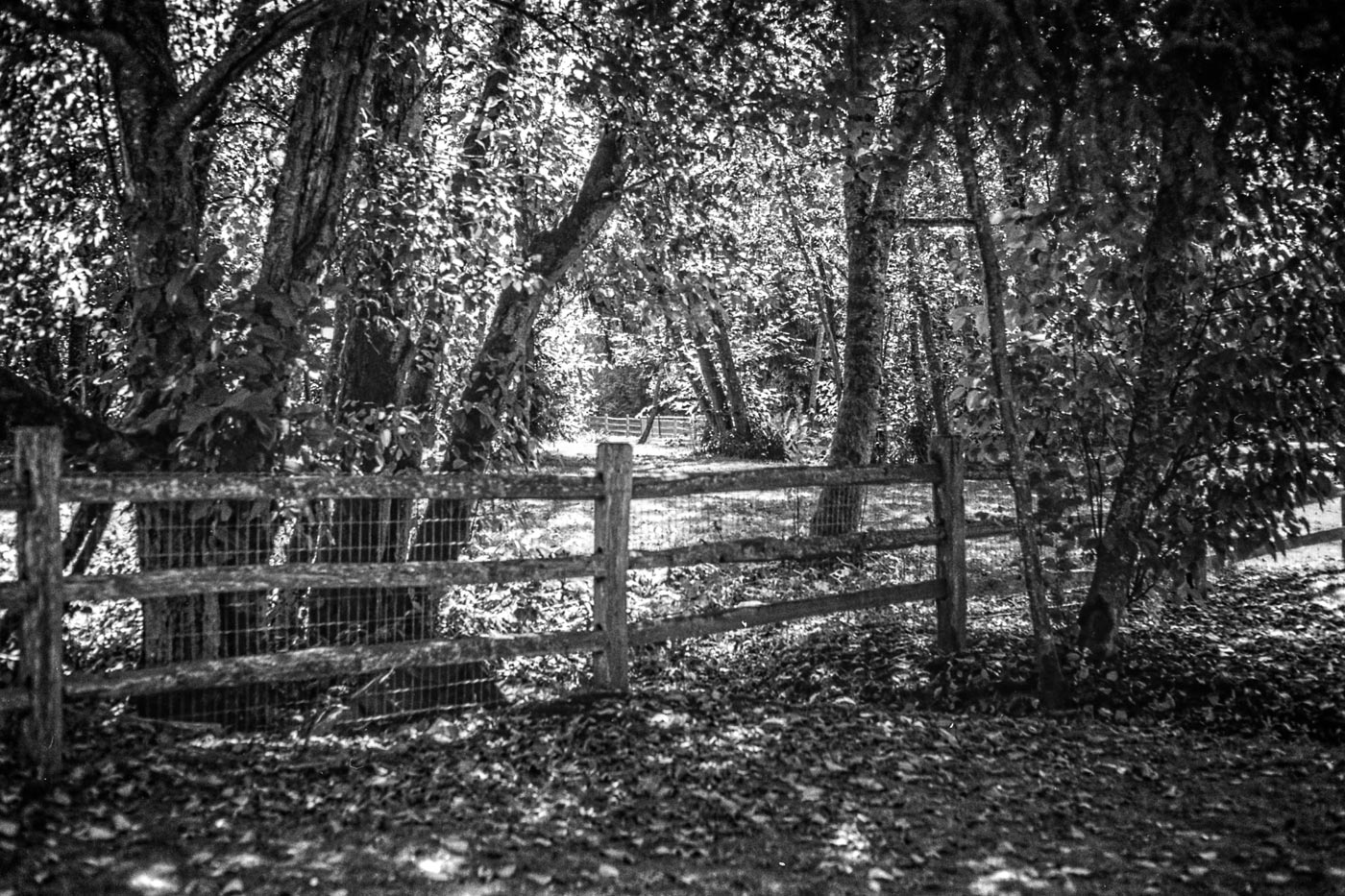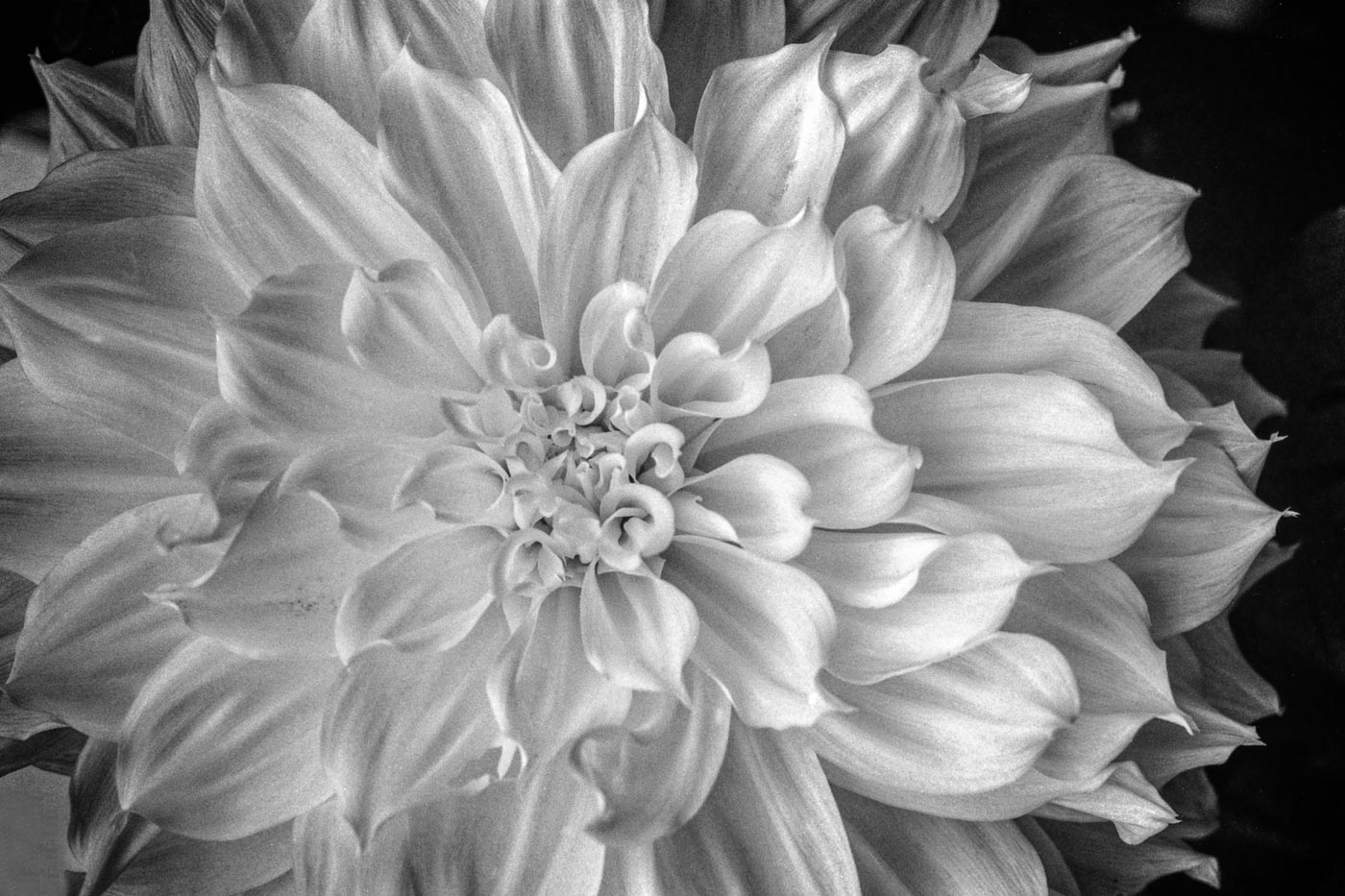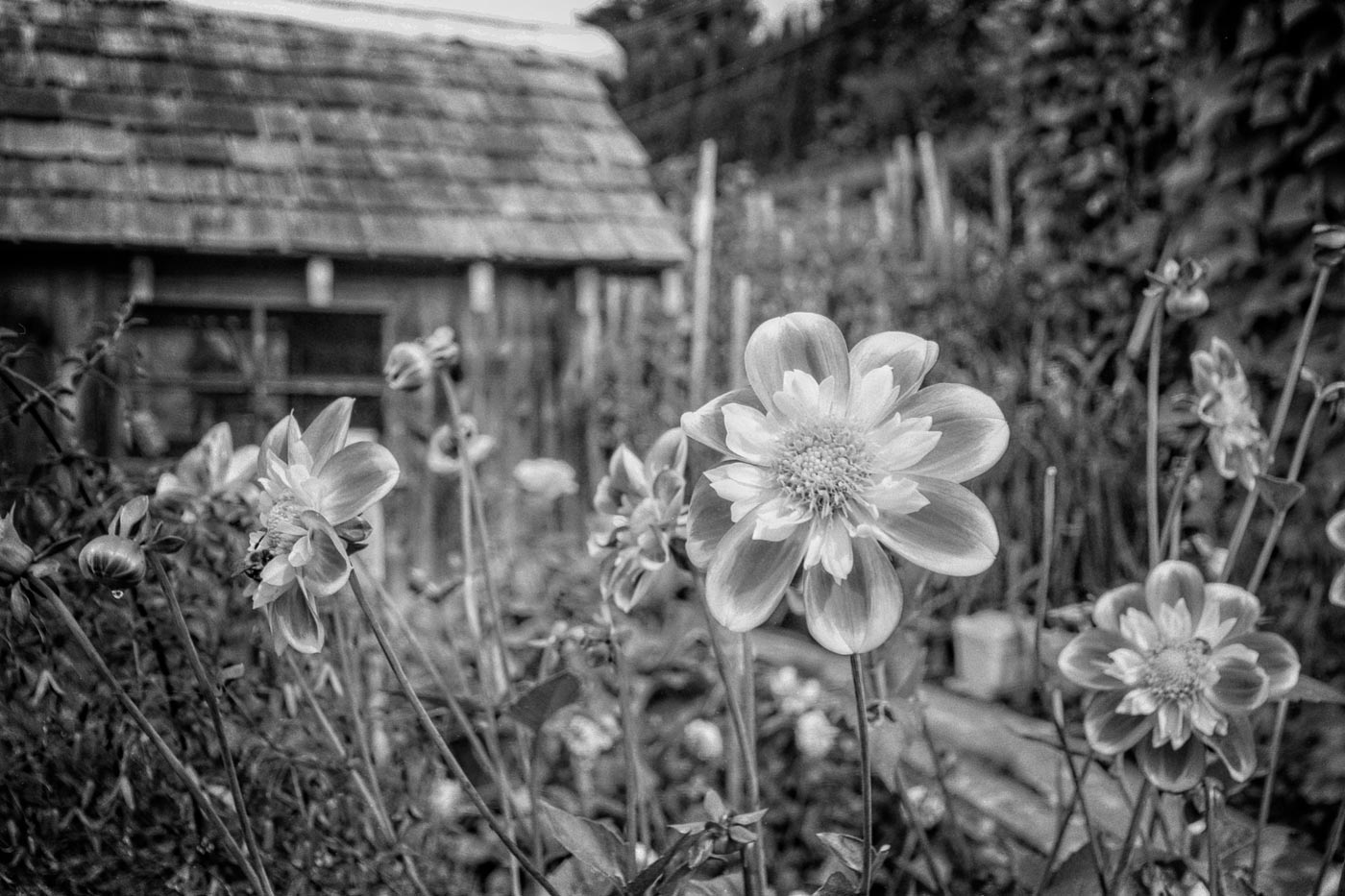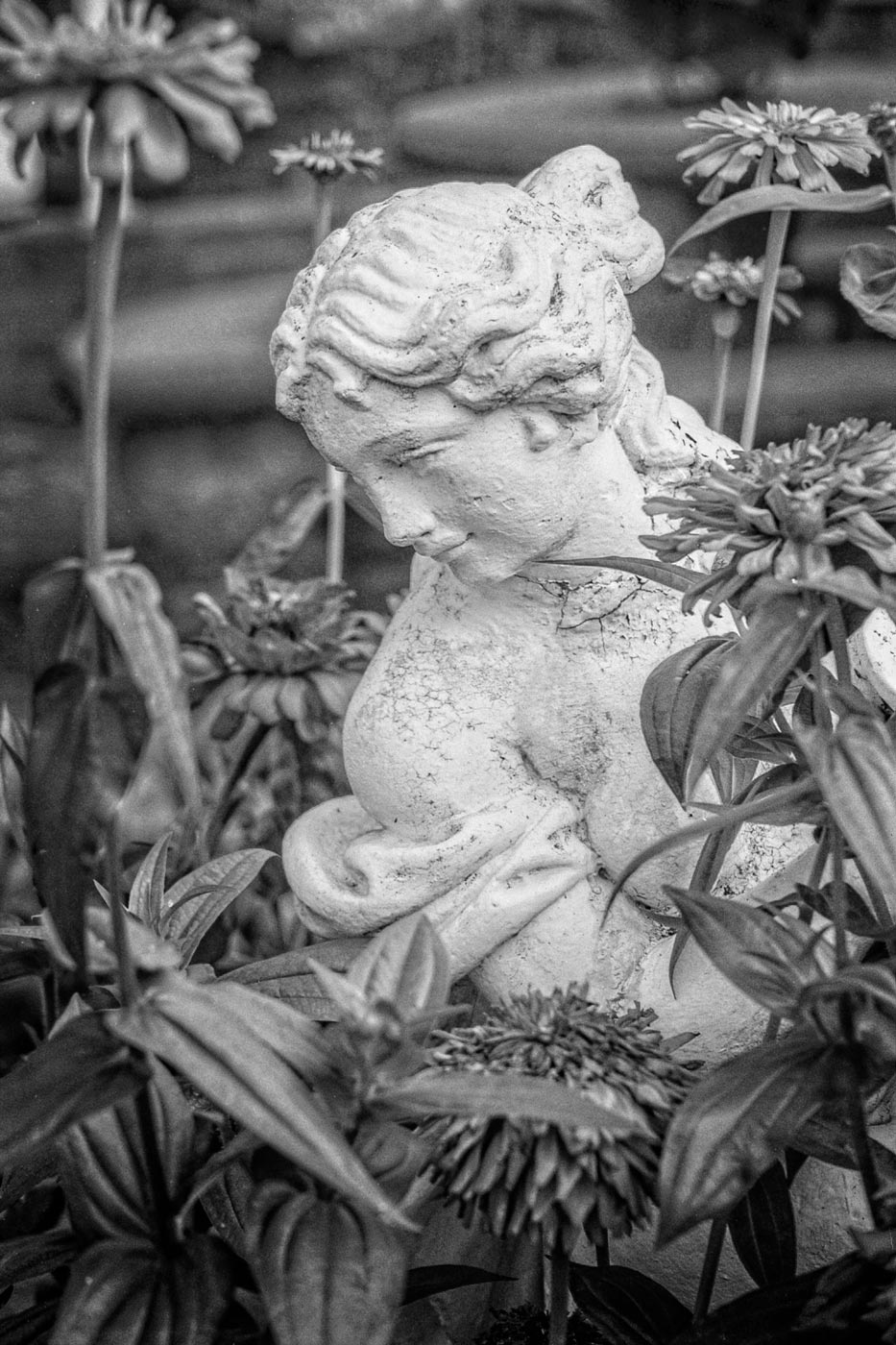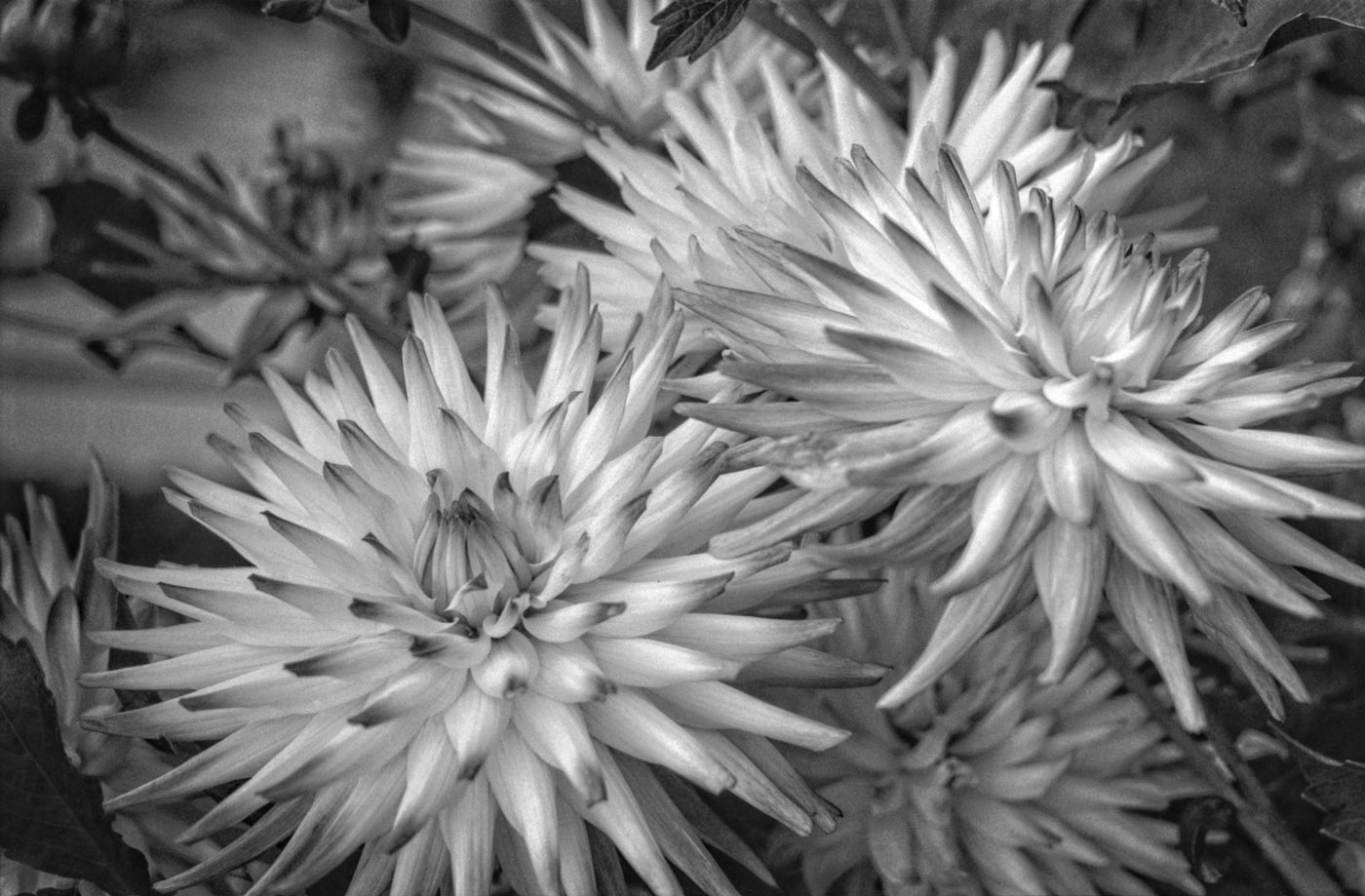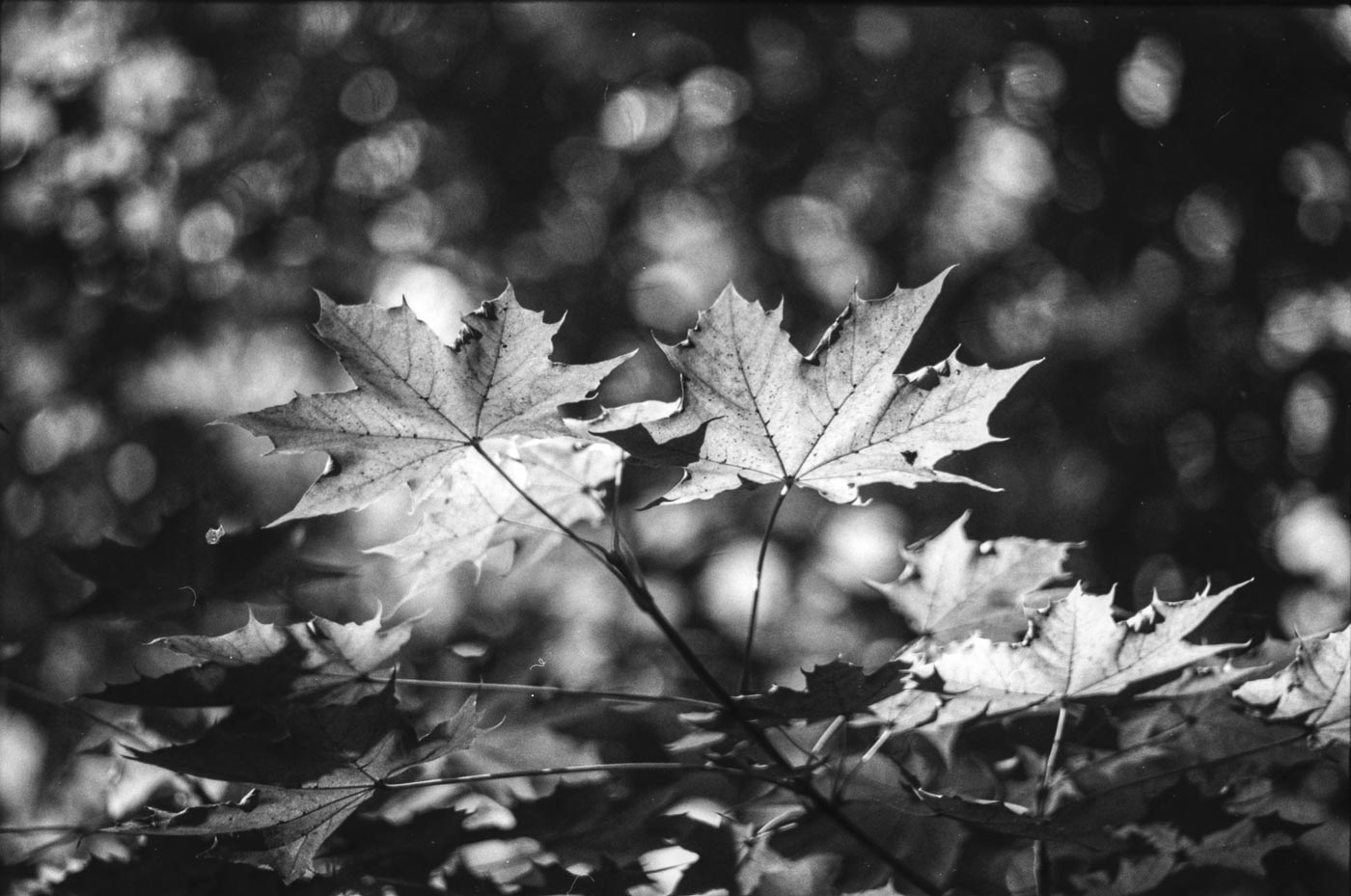The EX EE appears to be a typical SLR with an “F” series body. It could be considered one of the “F” series cameras except for several features that make it stand apart.
The layout of the top deck at first sight appears to be a standard SLR. But there are two things to notice. Around the rewind crank is a collar that controls f/ stop setting and the on-off setting for the metering. On the speed dial there are 2 setting, f/1.8 and f/3.5, for ISO setting which is explained in the text.
The iris blades, focus unit and back three elements of the camera lenses are permanently afixed to the camera body and the front portion of the lenses screw into the unit. The threads are visible in the above image.
The EX Camera Series
A short series leading to a dead end
According to the Canon Museum, Canon introduced the EX EE in October of 1969 , the first of two cameras that make up the EX series. This was an interesting camera in several respects but it was not in the mainstream and after only two models it was dropped from their line of cameras. At the time of its introduction Canon had just finished their “F” series of cameras with the FL lens mount and the F-1 was waiting in the wings. This camera was aimed at the amature user market and was priced accordingly.
When introduced, this was Canon’s first SLR combining fully automatic exposure with interchangeable lenses. It was still a manual focus camera but for an easy to operate camera it offered advanced features. such as the Quick Load system (QL) found on the more expensive “F” series cameras making film load easy and quick. It had a cloth focal plane shutter with a top speed of 1/500th of a second, a self timer and bright viewfinder. However, in other ways, this was an innovative and unique camera.
The most interesting feature of this camera is the lens mount. The helical focusing unit, iris diaphram and the back three elements of the lens, in two groups, are permanently mounted on the body. As a result the mirror box is sealed. The camera was sold with a 50mm f/1.8 lens screwed into this focusing unit. However, there were three other lenses available for the camera: the EX 35mm f/3.5, the EX 95mm f/3.5 and the EX 125mm f/3.5. That is a total of four lenses available in the EX series but each of them is only usable on a Canon EX camera which has the three rear elements permanently mounted in the focusing mechanism.
The range of focal lengths is acceptable in an amature camera but the lenses not being interchangeable with Canon’s FD series cameras is a drawback for the more serious photographer.
The lens arrangement is interesting enough but the uniqueness does not end there. There is no ground glass focusing screen. Instead the lens projects a virtual image which gives a very bright image. Focusing is done in a circular microprism area in the center of the field of view. The
The EX EE was sold with a 50mm f/1.8 lens as shown here. The “QL” below the self timer lever signifies that the camera has Canon’s Quick Loading system for the film.
The 95mm lens is f/3.5 as all the extra lenses are. To achieve this aperture the diameter of the 95mm lens is fairly large and it is heavy.
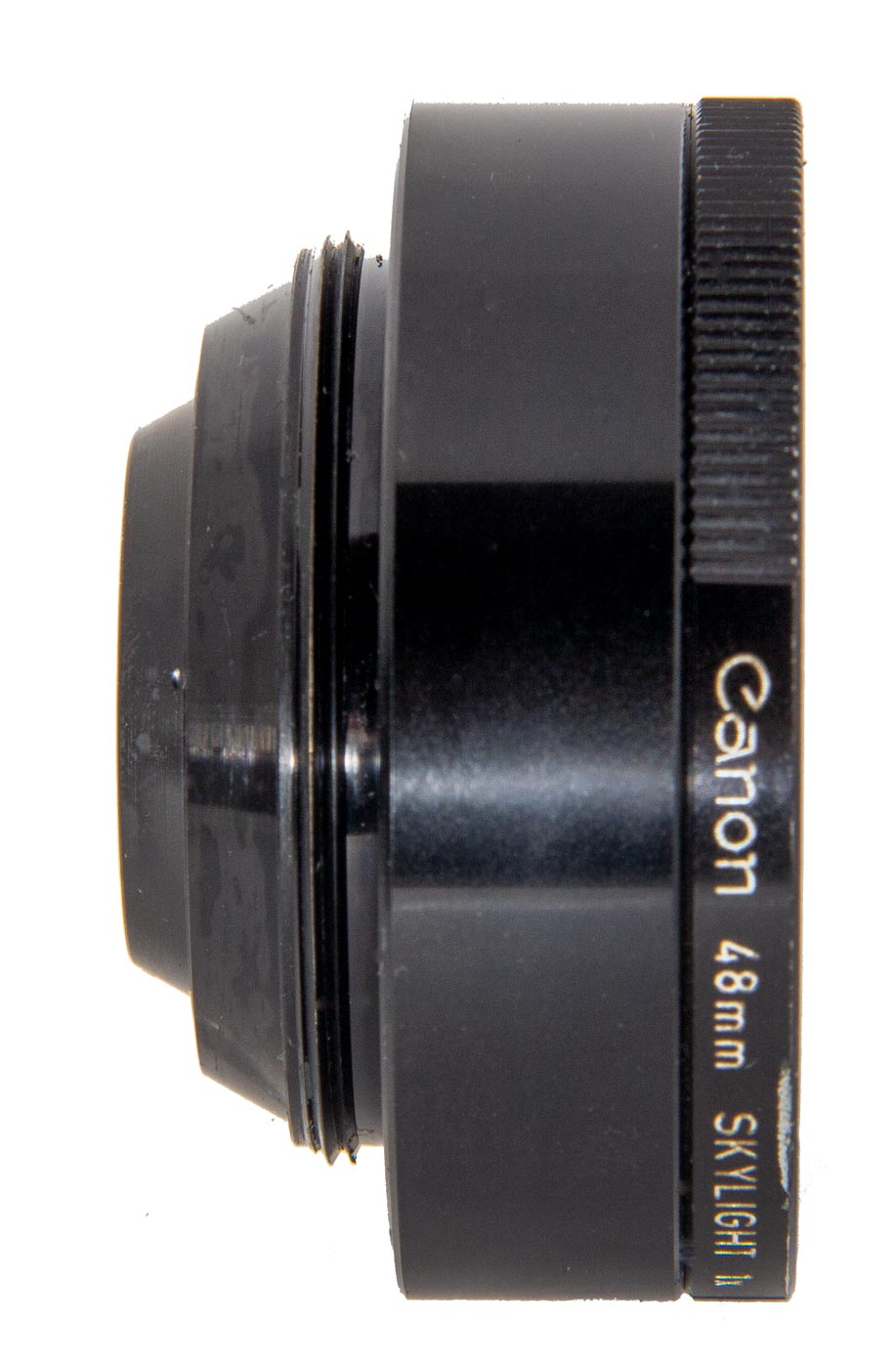
This is the 50mm “kit” lens that comes with the camera. The threads on the left side screw into the focusing mechanism on the front of the camera.
The widest lens is the EX 35mm. All of the extra lenses come in leather cases with the contents of each case clearly marked in white lettering.
The largest of the extra lenses and longest focal length at 125mm is the EX 125mm. It too is f/3.5 . On the camera it looks very odd.
The back of the 95mm lens shows the threads for mounting in the focusing unit. You can also se the focus scale which is not on the “kit” lens.
image area outside this circle is unreliable for focusing the image. Also note that there is no provision for viewing the image in stop down mode to preview depth of field.
Another interesting feature is the control of the aperture. The f/stop is set automatically when the camera is set on full automatic. It is always in Av mode as the shutter speed is the only adjustment available in automatic mode. However, the aperture may be set manually, not on the lens barrel, but by use of the ring located around the rewind crank. When you set this ring between the “1.8” and “16” marks the aperture is set. The setting is indicated in the viewfinder by the light meter needle. An interesting arrangement and easy to use once you are used to it.
And the unique features just keep coming! The 50mm “kit” lens has an aperture of f/1.8. The other three are all f/3.5 lenses. As metering takes place while the lens is wide open regardless of the lens. Some adustment has to be made in the metering system to reflect which lens is mounted. This is done manually.
The ISO (ASA in those days) is set on the top of the speed dial. You will see two settings for it, one marked “1.8” and the other “3.5”. With the 50mm lens you set the film ISO to the “1.8” scale setting and for the other lenses to the “3.5” setting.
It is all in the User Manual. Before using this camera, read it from cover to cover.
The EX Auto was the second camera in this series. It is shown here with its standard 50mm f/1.8 lens. It is easy to see the Canon SLR styling has carried through into this model.
The unique lens system can be seen here with the front lens elements removed leaving on the camera the focusing mechanism and the three element two group rear portion of the lens.
These cameras are sufficiently unique that before taking one out to shoot you should read the camera manual carefully and try out the various features so that you understand them completely.
The Canon EX Auto
According to the Canon Museum the EX EE was replaced in Februaray of 1972 with an improved version called the EX Auto. Externally this new camera looks almost identical to the earlier model.
The major update has to do with use of flash with the camera. Both cameras have standard PC sync sockets where the flash can be plugged in and exposure determined by use of the appropriate guide number. The EX EE has an equipment shoe but on the EX Auto the shoe has electrical contacts to fire the shoe mounted flash if one is used. All of this is explained in the User Manual available below.
The EX Auto adds support for Canon’s CAT (Canon Auto Tuning) electronic flash system when using the EX 50mm f/1.8 lens and the Canolite D electronic flash unit. Electronic flash units can have varying levels of light output depending on the charge on the capacitor in the flash unit. Canon overcame this variability by using special circuitry in the EX Auto that transmits actual voltage information to the camera to adjust the position of the light meter needle. A ring on the lens mount attaches to the lens so that focus distance information is passed to the camera to also adjust the meter needle. As a result focus distance and capacitor charge are all displayed in the viewfinder and f/stop can be read directly in the viewfinder. The camera will set the aperture correctly. Again, read the manual for details.
In addition, if you look at the ISO setting window on the speed dial, it has only one setting position. The camera senses which lens is mounted on the camera and adjusts the light reading accordingly. Other than that, the camera models are the same. Do read the manual because they are a little different.
The Lenses
The lenses are the same for both cameras. They did not change.
They are:
| EX 50mm f/1.8 | 48mm filter |
| EX 35mm f/3.5 | 48mm filter |
| EX 95mm f/3.5 | 62mm filter |
| EX 125mm f/3.5 | 72mm filter |
These lenses are usable only on the EX EE and EX Auto cameras because the interchangeable portion is not a complete lens. All four lenses rely on the three lens elements in the focusing unit on the camera.
The Bell & Howell Auto 35 Reflex is the Canon EX EE in Bell & Howell’s livery. But it is the identical camera.
The Canon EX EE was a popular camera. It was well made and had the solid feel of other Canon SLR’s of the time.
Canon reached an agreement with Bell & Howell in the United States to allow them to rebrand the camera as the Bell & Howell Auto 35/Reflex. It was the same camera and was made by Canon.
The Canon name does not appear on the body anywhere but the lenses are all Canon and marked the same as the lenses for the EX EE. They are the same lenses and are interchangeable. The strap that came with the camera was also branded as a Canon strap.
Bell & Howell had other Canon made cameras in their line-up: Autoload 340, Autoload 341 and Autoload 342, Auto 35/28 Focusmatic (based on the Canonet 28), and the Dial 35.
Compare the photos of this camera and those of the EX EE and you will see that they are the identical camera.
The Canon name does not apear on the camera body anywhere but the Bell & Howell name is front and center.
Shooting with the EE Auto
So what is one of these cameras like to shoot? For me that is the fun part of collecting. I loaded two 36 exposure rolls of Ilford Delta 100 Professional film and then went for a walk with my EX Auto Ser. No. 268290. All three of these cameras are essentially the same and to shoot one of them is to shoot any of them.
The Canon Quick Load System works really well and loading the film is simple. Although I put an Energizer 625G battery in the camera to play with the light meter I did not rely on the internal metering. The camera was designed for a mercury cell which would give a 1.3 volt output but the Energizer was a zink-acid battery giving 1.5 volts which would throw the light meter off slightly. I actually used my Sekonic hand held meter, although the readings were amazingly similar.
35mm is not my idea of wide angle but it is the widest of the EX lenses. There is no question that it is capable of taking a good picture.
Another image with the EX 35mm lens. Overall, this is a capable camera and it is pleasant to use.
The EX Auto has many different operating features but, once you have read the manual and played with the camera a bit, in handling it feels very much like any other “F” series Canon SLR of the time.
This was Canon’s first fully automatic TTL camera with interchangeable lenses. You select a shutter speed and set the camera to “EE” and press the button. I took a few exposures that way and it worked smoothly.
For most of the images I used my Sekonic light meter and set the aperture manually. Setting the f/stop works a little different with this camera but it is convenient.
Focus using the circular microprism area in the viewfinder is positive, even for my old eyes. I had no trouble with it. I liked the focusing very much. It is almost as easy as the split image viewfinder to use.
The shutter release is a single stage button that feels like that in contemporary “F” series SLR’s.
Using the four lenses was no more difficult than any other screw mount lenses. I was pleased that the 35mm and 50mm would focus down to a few inches for almost “macro” pictures.
All four seemed to produce good images. I normally try my old lenses on my Canon R with an adapter but that is not possible in this case because of the three lens elements permanently attached to the camera. So we have to judge performance using film.
And that brings up an interesting discussion. You see
I don’t really think that sharpness is the be all and end all of lenses. Images created by a particular lens can be soft or sharp but whether it creates a good photograph is up to the photographer. The trick is to chose the style of photograph to match the strengths of the lens. That comes from experience and skill in the person holding the camera.
Once the film was developed I scanned all of these images on my flatbed scanner at 2400 dpi. The film is actually capable of more detail than the scanner can produce but the results are sufficient for our purposes.
The image on the left is the full frame taken with the EX 50mm f/1.8 lens. On the right is the flower from that image shown at Photoshop’s 100%. The image is soft but that is due to a combination of the film and scanner limitations. The lens alone is certainly better than this.
I like the 80mm to 100mm focal range. The EE 95mm f/3.5 looks a little funny on the camera but it functions well as you can see here.
You can see from these simple images that the Canon EX Auto is a capable camera and definitely worthy of consideration as a shooter. With this simple test I can see no difference in the image quality from one of the four lenses to the next. Because it does not require a battery to operate, it is a manual camera except for the light meter circuitry, there are no electronics to fail. If the shutter becomes sticky it is easily remedied by a camera technician.
These cameras can be found in thrift stores or at camera shows for $30.00 to $60.00 dollars including the “kit” lens. The additional lenses are usually found for around $20.00 to $30.00 dollars. The lenses do not appear as sharp as more expensive FD lenses of the day but they are certainly capable of fine images.
This website is the work of R. Flynn Marr who is solely responsible for its contents which are subject to his claim of copyright. User Manuals, Brochures and Advertising Materials of Canon and other manufacturers available on this site are subject to the copyright claims and are the property of Canon and other manufacturers and they are offered here for personal use only.

